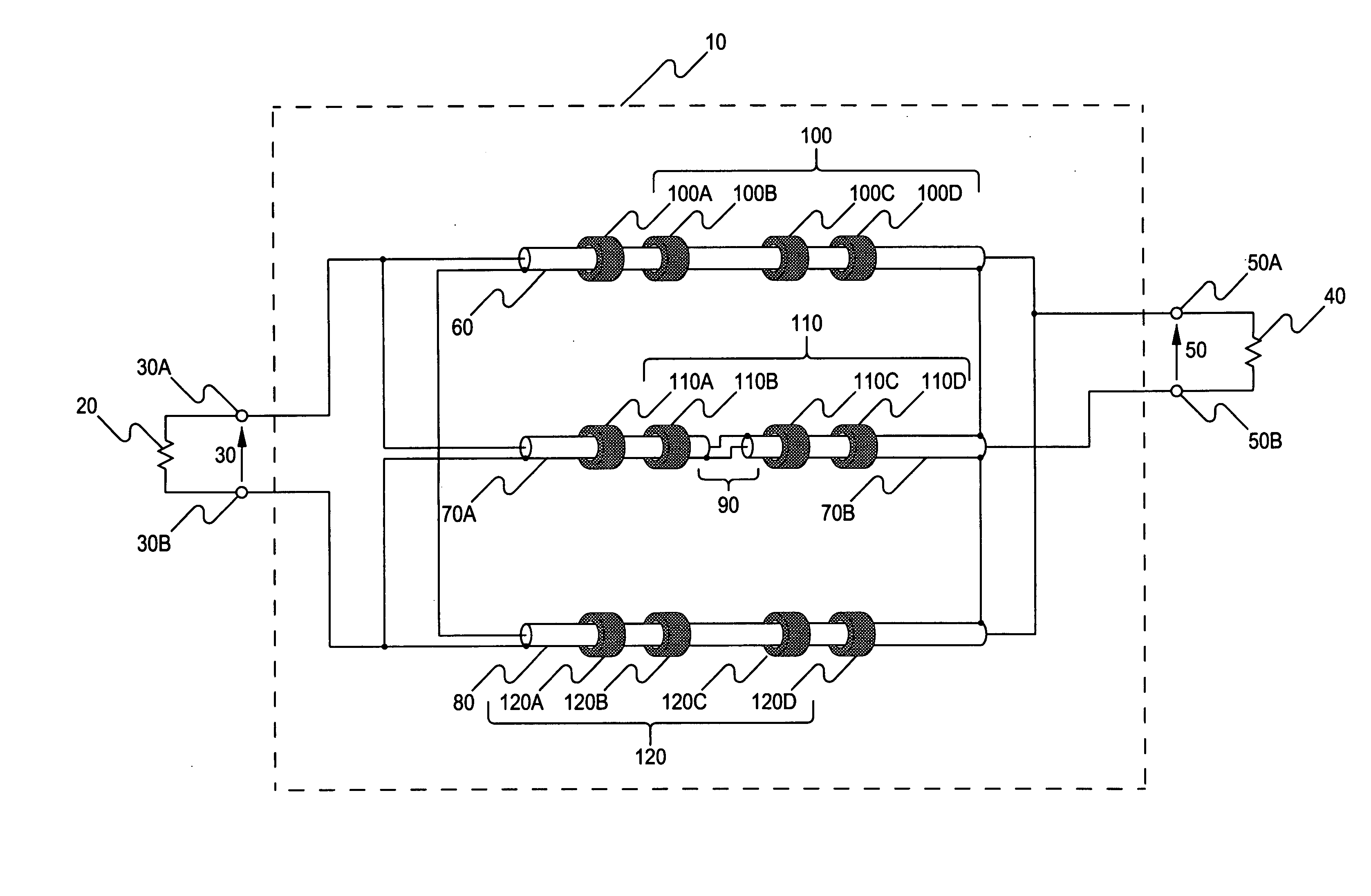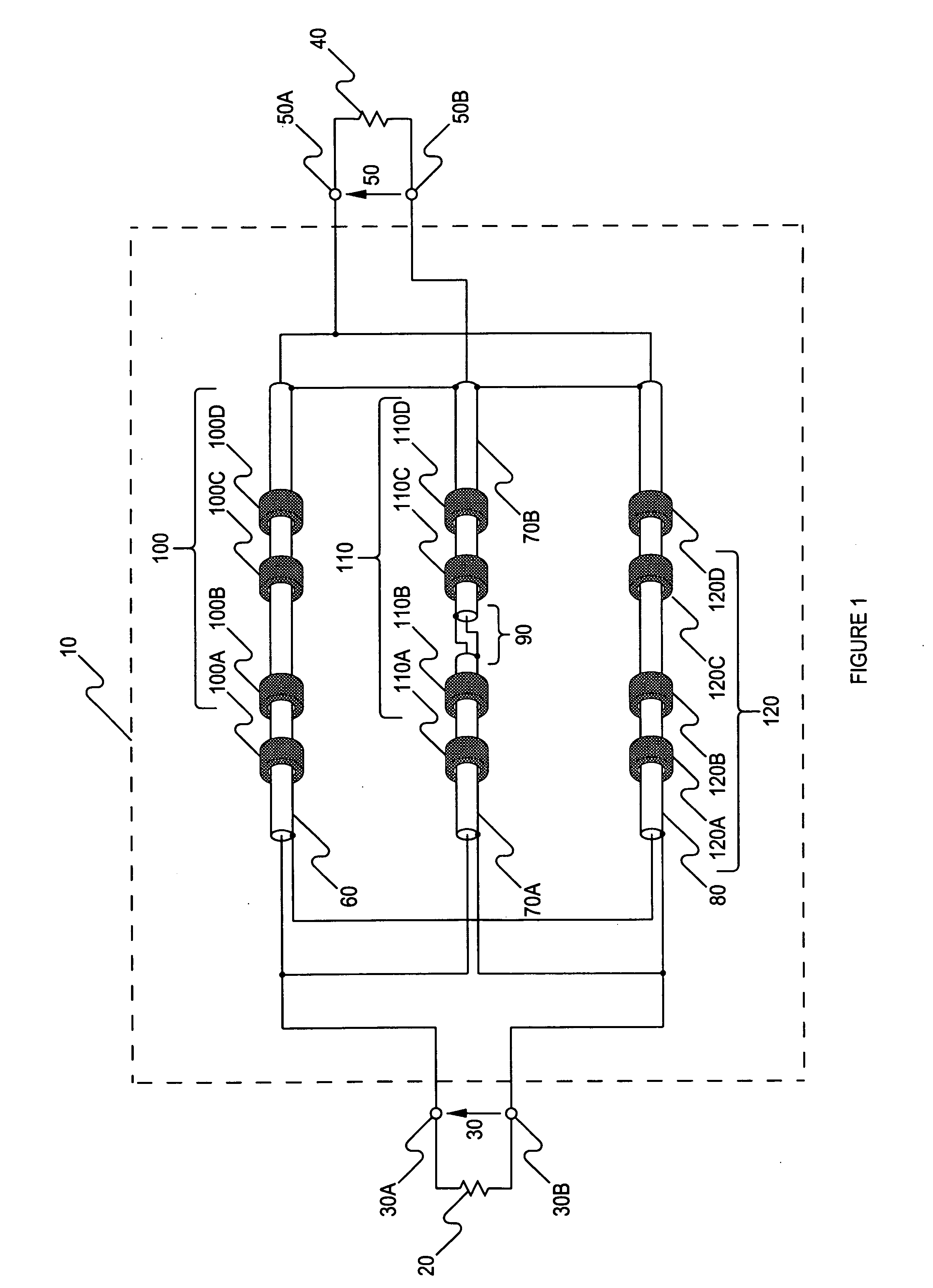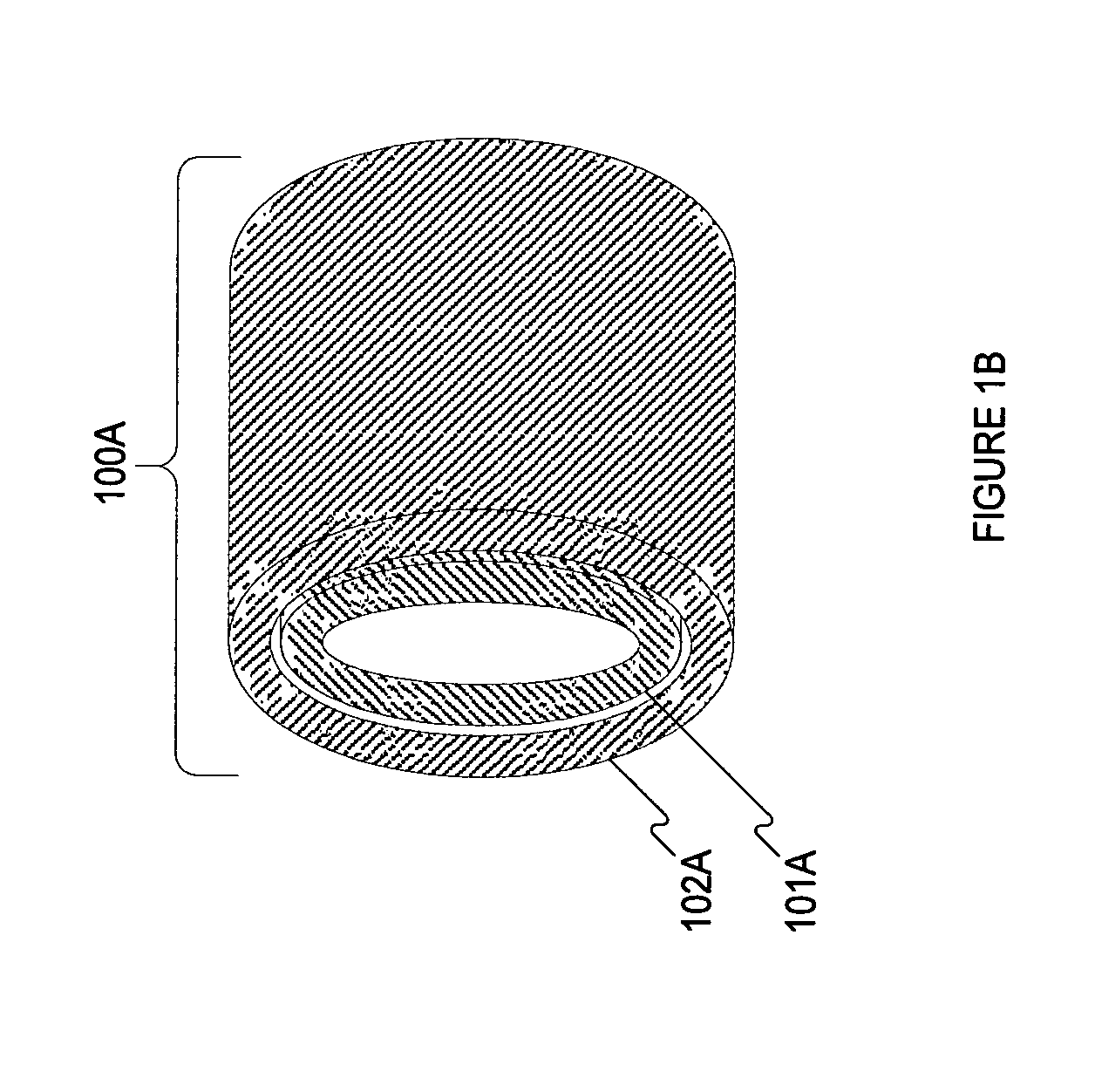Wide-bandwidth balanced transformer
- Summary
- Abstract
- Description
- Claims
- Application Information
AI Technical Summary
Benefits of technology
Problems solved by technology
Method used
Image
Examples
Embodiment Construction
[0046] The embodiment of the present invention illustrated in FIG. 1 comprises a novel connection of a plurality of transmission-line sections or means and a plurality of magnetic mechanisms or means providing impedance transformation between two arbitrary impedances, where either or both of the two impedances may be single-ended with respect to ground, floating with respect to ground, or balanced to ground, in a physical topology providing very wide-bandwidth, low-loss operation. Such impedance transformation in combination with means or mechanism to match between single-ended, floating, and balanced circuits with very wide-bandwidth, low loss operation represent significant and novel improvements provided by the present invention over transformation means of the prior art.
[0047] With reference to FIG. 1, transformation means or device 10 provides impedance matching between an impedance 20 at port 30 and impedance 40 at port 50. Port 30 comprises terminals 30A, 30B between which i...
PUM
 Login to View More
Login to View More Abstract
Description
Claims
Application Information
 Login to View More
Login to View More - R&D Engineer
- R&D Manager
- IP Professional
- Industry Leading Data Capabilities
- Powerful AI technology
- Patent DNA Extraction
Browse by: Latest US Patents, China's latest patents, Technical Efficacy Thesaurus, Application Domain, Technology Topic, Popular Technical Reports.
© 2024 PatSnap. All rights reserved.Legal|Privacy policy|Modern Slavery Act Transparency Statement|Sitemap|About US| Contact US: help@patsnap.com










